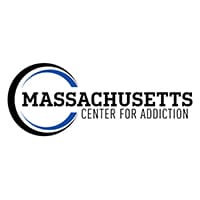Apr 20, 2023
PTSD and Self-Harm: Understanding the Connection
PTSD and self-harm are two distinct mental health challenges that can often intersect, leading to a complex web of emotional distress and difficulties. Understanding the links between these conditions and seeking appropriate treatment is crucial for individuals on the path to recovery and healing. This article delves into the connection between PTSD and self-harm, the impact of trauma, common treatment options, and ways to support someone struggling with these issues. By shedding light on these topics, we aim to provide valuable information and resources for those affected by these co-occurring disorders and their loved ones.
Self-Harm and PTSD: An Introduction
Self-harm and PTSD are two mental health issues that are quite separate. That said, there are many times when the two do intersect. This means someone will be experiencing both at once, also known as dual diagnosis or co-occurring disorders.
Self-harm is a problematic behavior where someone intentionally injures themselves. This is often used as a coping mechanism for significant emotional distress. PTSD stands for post-traumatic stress disorder. It’s a common condition after experiencing or witnessing a traumatic event. Symptoms like anxiety, depression, and flashbacks usually mark it.
We’re going to go deeper into the connection between PTSD and self-harm. This includes the impact of trauma in general. We’ll also share some of the common treatment options and how you can get help from a leader in mental health support.
Why Do People Self-Harm? Exploring the Reasons Behind Self-Injury
It’s important to understand that self-harm is not just about attention-seeking or a cry for help. There are many different reasons why someone may turn to self-injury as a coping mechanism. This includes including trauma, stress, anxiety, depression, and feelings of powerlessness or lack of control. Some people may also self-harm as a way to punish themselves or to feel something when they are numb or disconnected from their emotions. Whatever the reason, it’s important to approach self-harm with compassion and understanding and to seek professional help if necessary.
Understanding PTSD: Symptoms, Causes, and Risk Factors
PTSD is a mental health disorder that develops after experiencing or witnessing a traumatic event. Symptoms will often include anxiety, nightmares, and flashbacks. They also cause heavy avoidance or isolation from trigger events. These symptoms will be severe enough to impact a person’s daily life. And anything that can impact your daily life can impact your mental health.
Risk factors for developing PTSD are exposure to or witnessing a traumatic incident. This could be childhood trauma or just previous life experiences. Many combat veterans experience PTSD at one time or another. Not everyone exposed to trauma will develop PTSD. Those with existing mental health concerns may face a higher risk.
Self-Harm as a Traumatic Event: The Link to PTSD
The connection between self-harm and PTSD is due to the impact of the trauma on mental health. For some people, self-harm can be considered traumatic, coming with lasting emotional and mental effects. Additionally, those who harm themselves may face a greater risk of developing PTSD. This is because of the emotional distress and pain caused by the harming behaviors.
It’s critical to understand that self-harm can be a symptom of PTSD and a root cause. When someone experiences the emotional challenges of PTSD, self-harm may be a coping mechanism. This can cause the entire cycle to repeat.
Warning Signs of Self-Harm
It is crucial to recognize the warning signs of self-harm to provide support and help to someone struggling. Identifying these signs early on can significantly affect the individual’s recovery process. Here are some common warning signs of self-harm and ways to help someone who is struggling:
-
Unexplained cuts, burns, or bruises on the body, often in hidden or less visible areas.
-
Wearing long sleeves or pants even in warm weather to cover injuries.
-
A sudden change in mood or behavior, such as increased isolation, withdrawal, or agitation.
-
The presence of self-harming tools, such as razors, knives, or lighters, in the person’s belongings.
-
Engaging in risk-taking behavior or expressing a lack of concern for personal safety.
-
Difficulty managing emotions, including intense anger, sadness, or frustration.
Recovery from Self-Harm and PTSD: Treatment Options
Many treatment options can be used to explore and treat self-harm and PTSD. Those considering entering treatment for self-harm and PTSD should know what to expect. Your treatment center should customize your treatments to your needs, generally speaking. What follows are some of the most common types of treatment options that you and your care team may discuss.
Psychotherapy
Psychotherapy is also known as talk therapy. It’s a valuable treatment option for people with PTSD and self-harm. Through therapy, individuals can explore the root causes of their self-harming behaviors. They can also work on identifying childhood trauma or newer trauma. Once the trauma is identified, it can be processed or worked on.
Cognitive-Behavioral Therapy (CBT)
Cognitive-behavioral therapy, or CBT, is a highly effective treatment for PTSD. This type of psychotherapy focuses on helping individuals learn to help themselves. They learn to identify and change negative thoughts or beliefs. This lowers emotional distress. By learning these new ways of thinking and responding, individuals can implement better coping skills. Over time, this reduces their reliance on self-harm for coping.
Dialectical Behavior Therapy (DBT)
Another effective treatment is dialectical behavior therapy (DBT). This is a type of psychotherapy that helps individuals develop emotional regulation skills. It can also be used to learn to tolerate distress and improve various relationships. Learning these skills is essential for recovery from self-harm.
Developing Healthy Coping Mechanisms: A Key Component of PTSD Treatment for Self-Harm
One of the most important parts of treating PTSD and self-harm is education. Education in helping those individuals learn better ways to cope with stress or triggers. Self-harm is nearly always used as an unhealthy way to manage emotional stress. This means learning better strategies to cope with those situations is a cornerstone of healing.
Some of these strategies include deep breathing exercises, journaling, and practicing mindfulness. Finding new, healthier ways to cope with daily stress can lower the risk of self-harm and promote long-term healing.
Key Takeaways on PTSD and Self-Harm
-
PTSD and self-harm are separate mental health issues but often intersect, resulting in dual diagnosis or co-occurring disorders.
-
Trauma plays a significant role in the connection between self-harm and PTSD, with self-harm potentially causing or exacerbating PTSD symptoms.
-
Treatment options for self-harm and PTSD include psychotherapy, cognitive-behavioral therapy (CBT), and dialectical behavior therapy (DBT), which help individuals process trauma, manage emotions, and develop healthy coping mechanisms.
-
Recognizing the warning signs of self-harm and offering support to those struggling is crucial for early intervention and promoting recovery.
-
Developing healthy coping mechanisms and seeking professional help are key components of successful treatment for PTSD and self-harm.
-
Resources such as the Massachusetts Center for Addiction provide specialized treatment programs and support for individuals with co-occurring disorders, facilitating personalized treatment plans and promoting long-term recovery.
How to Seek Help: Resources from Massachusetts’s Center for Addiction
If you or someone you love has been struggling with the symptoms of PTSD and have been using self-harm to cope, there’s a better way. You don’t have to suffer in silence; help is closer than you think. The Massachusetts Center for Addiction offers various resources and treatment programs. Each program addresses the specific, unique needs of the individual who needs it.
We also offer a dual-diagnosis program. This treatment program focuses on diagnoses of substance or alcohol use disorder and a mental health disorder. Also known as co-occurring disorders, they need comprehensive, simultaneous treatment. It can be highly successful for those with PTSD and self-harm.
The same can be said for our partial hospitalization program. Our PHP provides significant structure, guidance, and supervision while patients live independently. Intensive outpatient programs provide a flexible solution for patients stepping down their care. Outpatient care can help foster recovery while still working or attending school.
Get started on your personalized treatment plan for PTSD and self-harm. Speak to a professional about your needs. The team at the Massachusetts Center for Addiction is ready to help. Reach out today, and get started on a better tomorrow.

Contact Us

Address
Quincy, MA 02169
Start your recovery with
Massachusetts Center for Addiction
Our team is available 24 hours a day, 7 days a week to answer any questions you may have. Give us a call today and begin your journey toward long-term recovery.






